Image first:

As you can see, I have a set of normal distributions. Made for a presentation purpose, there was a feedback that those plots should be "normalized", for what I understood having the plot values set to some maximum value and the curvature of the plot set to fit this anyways. The goal is to make those plots easier to compare visually - I hope this makes sense. I'm using histfit for this plot.
Do you know of some method how can I possible make those graphs more comparable in that way?
EDIT: As it was marked as a duplicate, it's not really the case. I'm not really looking for the probability density to fit the histogram, I want to set a maximum value for each probability density curve. I know about the market topics, I just couldn't find my anwser there.
EDIT2:
Those are exercpts from my code with the solutions they produce:
[f1,x1] = hist(data1);
[f2,x2] = hist(data2);
[f3,x3] = hist(data3);
avg = mean(data1);
stdev = std(data1);
VERT1 = sort(data1);
y1 = exp(- 0.5 * ((VERT1 - avg) / stdev) .^ 2) / (stdev * sqrt(2 * pi));
y11 = y1/max(data1);
avg = mean(data2);
stdev = std(data2);
VERT2 = sort(data2);
y2 = exp(- 0.5 * ((VERT2 - avg) / stdev) .^ 2) / (stdev * sqrt(2 * pi));
y22 = y2/max(data2);
%
avg = mean(data3);
stdev = std(data3);
VERT3 = sort(data3);
y3 = exp(- 0.5 * ((VERT3 - avg) / stdev) .^ 2) / (stdev * sqrt(2 * pi));
y33 = y3/max(data3);

Direct link for clarity: https://i.stack.imgur.com/GBYIz.jpg
From this explanation I get this:
[f1,x1] = hist(data1);
[f2,x2] = hist(data2);
[f3,x3] = hist(data3);
avg = mean(data1);
stdev = std(data1);
VERT1 = sort(data1);
y1 = exp(- 0.5 * ((VERT1 - avg) / stdev) .^ 2) / (stdev * sqrt(2 * pi));
avg = mean(data2);
stdev = std(data2);
VERT2 = sort(data2);
y2 = exp(- 0.5 * ((VERT2 - avg) / stdev) .^ 2) / (stdev * sqrt(2 * pi));
avg = mean(data3);
stdev = std(data3);
VERT3 = sort(data3);
y3 = exp(- 0.5 * ((VERT3 - avg) / stdev) .^ 2) / (stdev * sqrt(2 * pi));
h1 = bar(x1,f1/trapz(x1,f1));hold on;
h2 = bar(x2,f2/trapz(x2,f2),'r');hold on;
h3 = bar(x3,f3/trapz(x3,f3),'g');hold on;
plot(VERT1,y1,'b-');hold on;
plot(VERT2,y2,'r-');hold on;
plot(VERT3,y3,'g-');hold off;
Which results in: 
Hope this explains everything.

